Honor Award
Designing the Ecology of Democracy
Emily Bonifaci, Student ASLA; Alexis Canter, Student ASLA; Jenelle Clark, Student ASLA; Ilana Cohen, Student ASLA; Casey Elmer, Student ASLA; Julie Gawendo, Student ASLA; Matthew Girard, Student ASLA; Eamonn Hutton, Student ASLA; Diane Lipovsky, Student ASLA; Nilay Mistry, Student Affiliate ASLA; Izabela Riano, Student ASLA and Kerry Rutz, Student ASLA,
Harvard University Graduate School of Design
Faculty Advisor: Gary R. Hilderbrand, FASLA
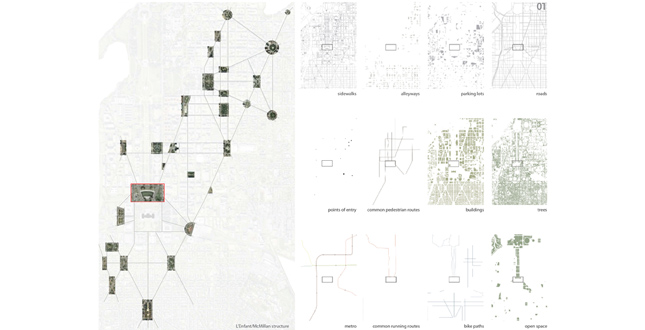 Close Me!
Close Me!DC/Federal Patterns: Studio mapping depicts the overlapping public realms of the Federal City and the District. The current relationship between D.C. and Executive/Legislative governance impedes normal life in this city; urban systems offer integrative potential.
Download Hi-Res ImagePhoto:
Photo 1 of 15
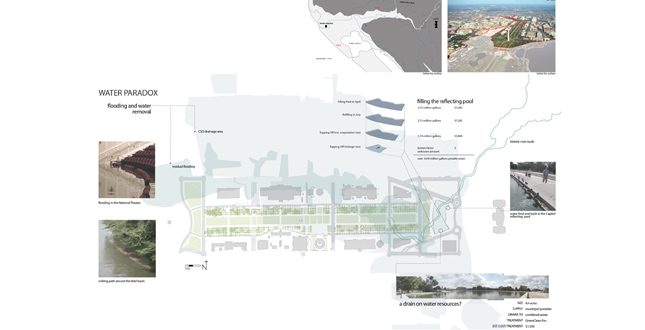 Close Me!
Close Me!Shifting Ground and Flooding: Vast filling operations over 100 years created the impression of stasis. But settling and residual flooding render the ground unstable. Though there is abundant runoff, water features waste potable water at staggering levels.
Download Hi-Res ImagePhoto:
Photo 2 of 15
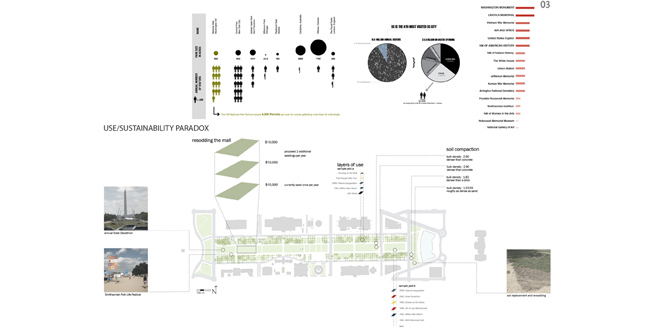 Close Me!
Close Me!The Crisis of Visitation: The nation’s highest national park visitation tramples the Mall and leads to impervious, compacted soils and wasted sod applications. The variety and character of use brings high value but is on the whole destructive and consumptive.
Download Hi-Res ImagePhoto:
Photo 3 of 15
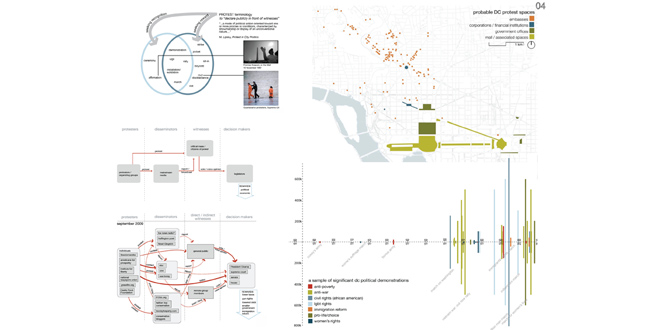 Close Me!
Close Me!Grounds for Demonstration: The Mall is our privileged site of witness to varied forms of protest. As the nation’s front yard and the world’s most visible marching ground, it gives voice to dissent, or affirmation, or solidarity.
Download Hi-Res ImagePhoto:
Photo 4 of 15
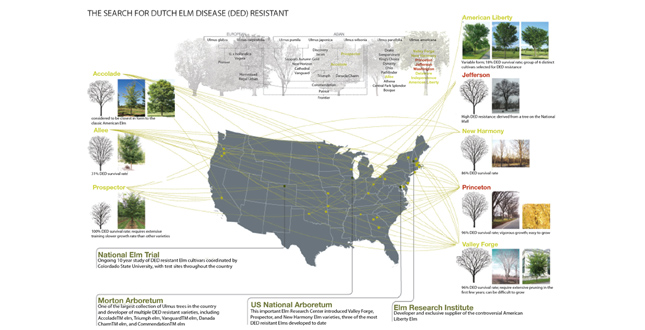 Close Me!
Close Me!A fixation on Elms: The National Park Service plans focus on the American elm as the sole replacement tree on the Mall and have worked with growers to improve selections. Form and character of cultivars differ dramatically.
Download Hi-Res ImagePhoto:
Photo 5 of 15
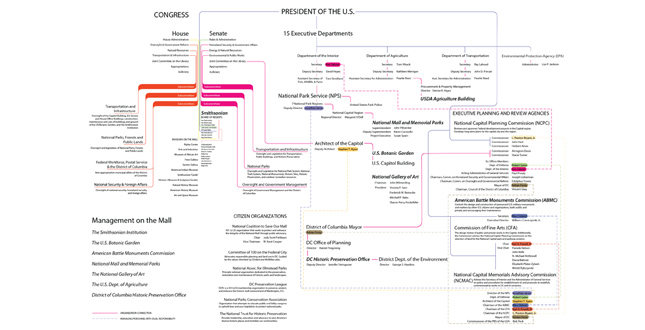 Close Me!
Close Me!A Maze of Governance: Ownership, regulation, management, and design negotiation pass through immense thickets of bureaucratic organization. Memorials can take up to fifty years to pass muster.
Download Hi-Res ImagePhoto:
Photo 6 of 15
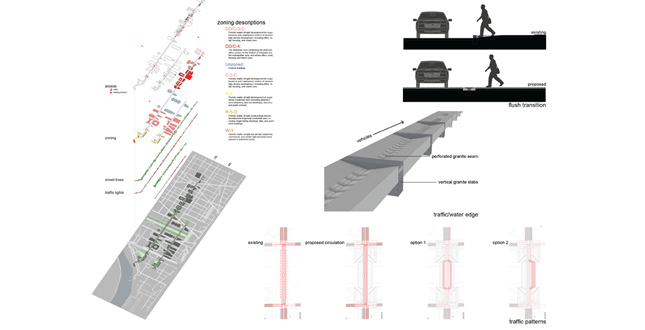 Close Me!
Close Me!Mall Crossroads: Sustainable, accessible, and complete street design standards on north/south crossings can lead to greater integration of the monumental core with the city.
Download Hi-Res ImagePhoto:
Photo 7 of 15
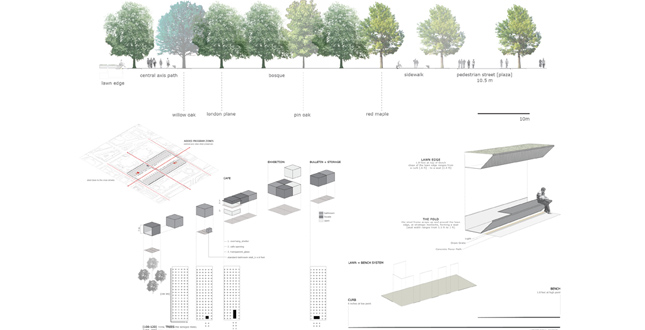 Close Me!
Close Me!Adapting Infrastructure: Pedestrian comfort, programmatic support, and visitor infrastructure must be addressed comprehensively and adaptively. Modular and systematic design components can be deployed without major alternations to the monumental core.
Download Hi-Res ImagePhoto:
Photo 8 of 15
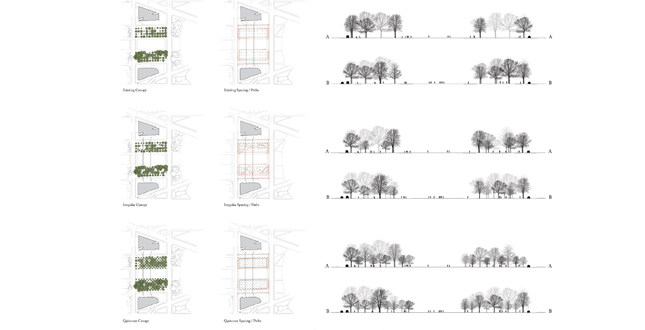 Close Me!
Close Me!Reorganizing Canopy: Reorganization and replanting of trees in the remnant spaces of the depleted American elm Bosque could achieve age rotation, greater canopy structure, improved soil health, and the expression diverse biophysical conditions appropriate to the nation’s most iconic landscape.
Download Hi-Res ImagePhoto:
Photo 9 of 15
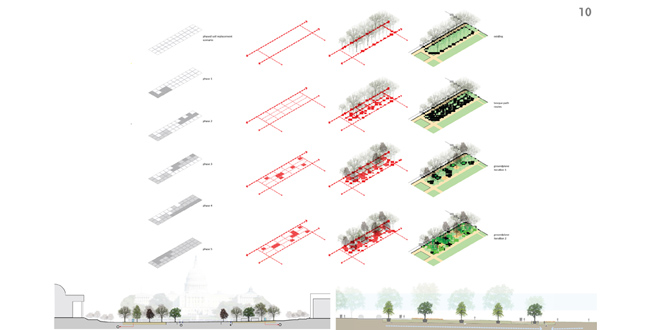 Close Me!
Close Me!Infilling Canopy: We deployed numerous staging strategies to achieve rotation, improve canopy and soil health, and accomplish biological diversity. All these strategies reject the Park Service’s current position on the singularity of the American elm as the only appropriate species on the Mall.
Download Hi-Res ImagePhoto:
Photo 10 of 15
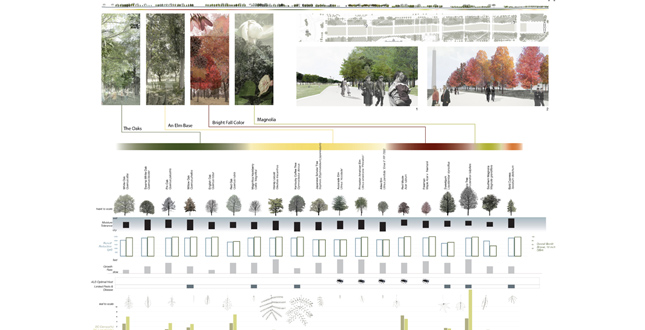 Close Me!
Close Me!Rethinking The Order: The Mall’s ecological paradox — suppressed biophysical conditions and single species dominance — must be solved. A dramatically altered and expanded urban forest is warranted.
Download Hi-Res ImagePhoto:
Photo 11 of 15
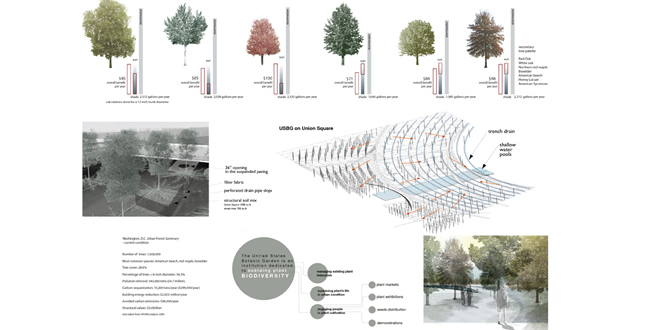 Close Me!
Close Me!Ecological USBC: The United States Botanical Garden, founded as an expression of horticultural ambition for the nation, should adapt its mission to an in-situ curatorial mandate and return the Mall and Union Square to exemplary, sustainable urban practices.
Download Hi-Res ImagePhoto:
Photo 12 of 15
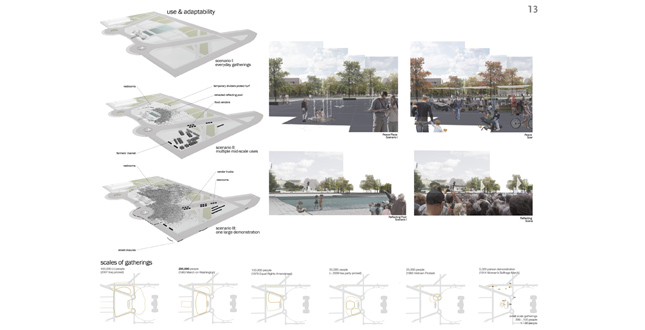 Close Me!
Close Me!Staging Adaptability: Scalable, drainable reflecting pools can be deployed in the Union Square to achieve a high degree of flexibility — enabling the return of enormous First Amendment witness potential at the foot of the Capitol.
Download Hi-Res ImagePhoto:
Photo 13 of 15
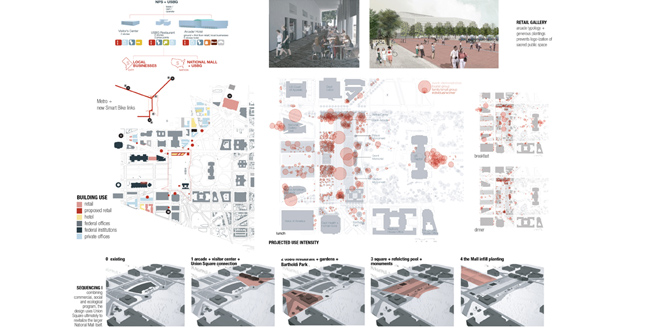 Close Me!
Close Me!Animating Union Square: The Mall is vastly underserved for visitor facilities and food venues. This proposal injects new program at opportune locations and fuses monumental and touristic engagement with everyday urbanism.
Download Hi-Res ImagePhoto:
Photo 14 of 15
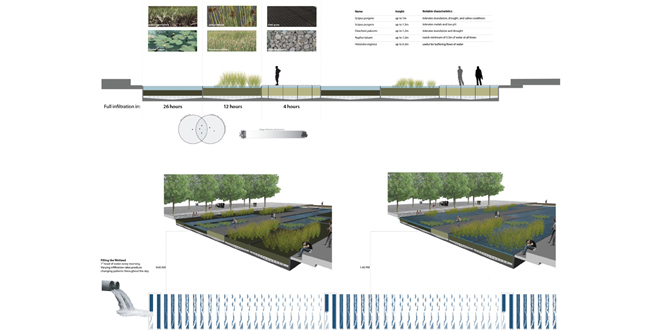 Close Me!
Close Me!Hydro Platform: Rebuilding Union Square as a performance landscape enables storm flows to be staged, treated, and infiltrated on site. The proposal takes account of federal building roofs in the watershed and offers enormous programmatic and interpretive benefits.
Download Hi-Res ImagePhoto:
Photo 15 of 15
Project Statement
This collective project — one studio, twelve participants — forced us to speculate on the nature of design and democracy in an ecological age. The Washington Mall, the most heavily visited national park and our most important public forum for democratic life, cannot be sustained in its present condition. Our analytical work and design speculations create a platform for the next generation of change at Union Square, the Us Botanical Garden, the Mall, and the adjoining city fabric. The National Park Service plan is now emerging and this studio aims to influence the debate: we must make the Mall an example of our best sustain practices.
Project Narrative
For 200 years, our National Mall’s grand spatial figure has formed a recognizable image for the American democracy. It is a complex landscape, often contested and always passionately defended. Constant use and alteration have hardened and depleted the biological circumstances of the Mall and suppressed ecological relationships to the point where today’s Mall has rightly been declared unsustainable. The time has come for a new ecological paradigm to take hold.
A two-mile long swath of 9000 trees, turf, memorials, and reflecting pools, the Mall’s outlines were first established in Charles Pierre L’Enfant’s 1791 plan: a conceptual field for embedding the institutions of a balanced federalism in a park at the base of the Capitol Hill. In 1850, with a new plan to expand the collections of the United States Botanic Garden below the Capitol Grounds, Andrew Jackson Downing aligned a striving ambition of American horticulture with an emerging scientific identity for the nation. In 1902, a plan by members of the Senate Park Commission Plan, including Daniel H. Burnham and Frederick Law Olmsted, Jr., revised Downing’s landscape to reflect a more unified spatial organization. They pursued a vastly different horticultural identity, one focused singularly on groves of American elm and a monumental turfgrass median. Aspects of the plan were implemented during the 1930s by Olmsted’s firm. Later, in anticipation of the nation’s bicentennial, yet another plan by Skidmore Owings & Merril and Dan Kiley both reinforced and disrupted Olmsted’s work. In 2004, the World War II Memorial altered the eastern end of the Lincoln Memorial Reflecting Pool. This year, the last major addition on the Mall will be designed as a home for the National Museum of African American History.
The Mall awaits overdue action by Congress and the American people. The crisis of its decline became abundantly clear when record-setting crowds for the 44th Presidential Inauguration trampled the Mall’s turf. Within weeks, the case for renewed investment in the Mall’s civic infrastructure fell victim to a political charge that the National Park Service sought to grab $200M for “re-sodding the National Mall.” The Obama administration withdrew the requested earmark. It will return, however. The requisite repair of sod and soil are the tip of an iceberg; with the impending needs for a visitor infrastructure and an interpretive reorganization, recovery and redesign of the Mall will become a national imperative.
The Studio Brief
The studio examined the Mall as a reflection of evolving natural and cultural conditions. We began with the view of the Mall that corresponds to geographer Don Mitchell's formulation of a “field of contention” — a place that gives voice to the communication of democratic agreement and dissent, of affirmation and turbulence, equilibrium and unrest. We aimed to square this reading with the formulation of ecology-driven design solutions. The work included here is representative of a larger and more diverse body of production.
Analysis Topics
A selection of the analysis phase is highlighted here:
- Concepts of National Identity, Diversity, Multiculturalism
- First Amendment Rights and Forms of Protest
- Land Filling and Instability
- Residual Flooding and Wasteful Consumption of Water Resources
- Performance of the Urban Forest
- A Maze of Governance
Plans
A selection of student proposals is included, covering the following topics:
Mall Proposals:
- Urban Design Crossroads
- Adapting Infrastructure
- Reorganizing Canopy
- Rethinking Olmsted’s Order
- Returning the USBG to Ecological Relevance
Union Square Proposals:
- Adaptable Infrastructure
- Everyday Urbanism
- Hydrological Relevance
Additional Project Credits
Design Critic
Gareth Doherty
Collaborating Design Critic
Elizabeth K. Meyer, FASLA
Symposium Host
John Beardsley
National Park Service Project Executive
Susan Spain, ASLA
Research Assistant and Course Website Manager
James Willeford, Student ASLA
Teaching Assistant
Ilana Cohen, Student ASLA





